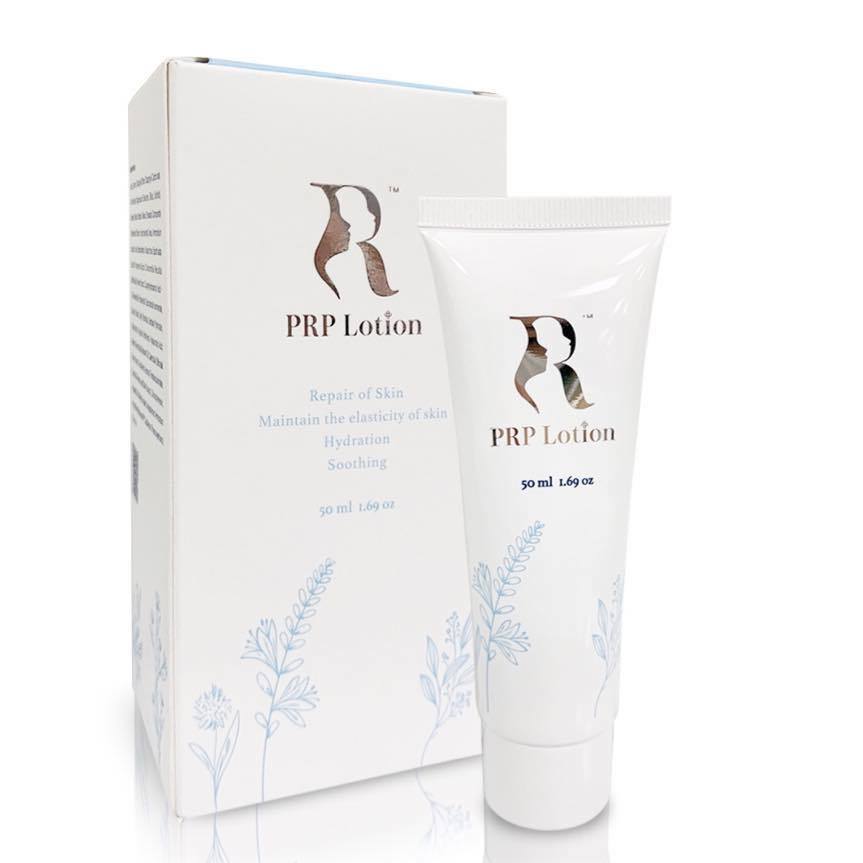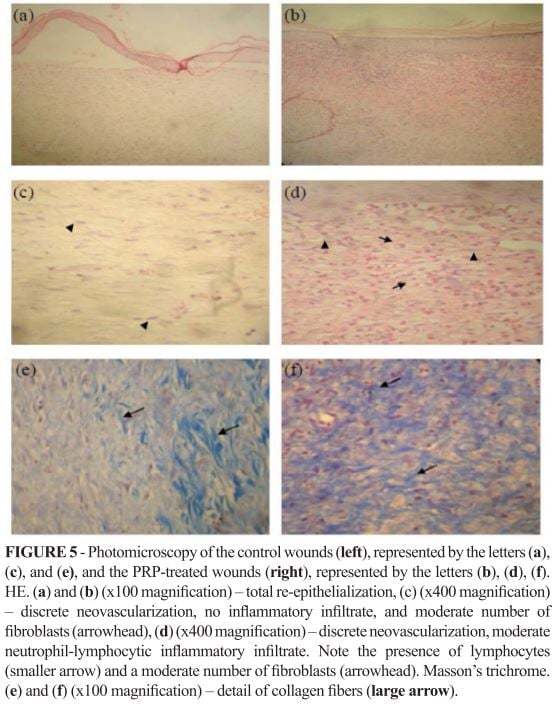
異源性PRP凝膠能促進皮膚傷口癒合
異源性PRP凝膠能促進皮膚傷口癒合
實驗研究在六隻兔子身上進行了兩次手術切除,一側被隨機分配到使用局部生理溶液治療,另一側使用異源性PRP凝膠治療,術後 0、3、7、10、14 和 17 天進行臨床評估和形態學評估,結果顯示在比較傷口面積的部分,使用PRP組明顯縮短傷口癒合的時間。

PRP科技新知- 異源性PRP凝膠能促進皮膚傷口癒合
研究目的:
評估異源性富含血小板血漿 (PRP) 凝膠對於手術皮膚傷口癒合的潛力。
研究方法:
使用一隻健康狗的血液用於製備生產異源性 PRP原料,將葡萄糖酸鈣添加到 PRP 中以形成凝膠。在六隻兔子身上進行了兩次手術切除,一次在背部中線的右側,另一次在左側。一側被隨機分配到使用局部生理溶液治療,另一側使用異源性PRP凝膠治療。術後 0、3、7、10、14 和 17 天進行臨床評估(體重、疼痛敏感性、顏色、水腫、充血、滲出、結痂和肉芽)和形態學評估。第17天進行組織學分析。
結果:
除了第 10 天出現結痂外,臨床變異數在實驗組之間沒有顯著差異。在比較傷口面積的部分,使用PRP組明顯縮短傷口癒合的時間。組織學結果發現對照組和 PRP 治療組之間沒有顯著差異。
結論:
異源性PRP凝膠能促進皮膚傷口癒合,無不良反應。
原文摘要:
PURPOSE: To evaluate the potential of heterologous platelet-rich plasma (PRP) gel for surgical skin wound healing in rabbits.
METHODS: Blood from a single healthy dog was used for PRP production, with calcium gluconate added to the PRP to form the gel. Two surgical excisions, one to the right and the other to the left of the dorsal midline, were made in six rabbits. One side was randomly allocated to topical application of a physiological solution, and the other was allocated to treatment with heterologous PRP gel. Clinical assessments (weight, pain sensitivity, coloring, edema, hyperemia, exudation, crust, and granulation) and morphometric evaluations were performed 0, 3, 7, 10, 14, and 17 days postoperatively. Histological analysis was performed on the 17th day.
RESULTS: With the exception of the presence of a crust at day 10, clinical variables did not differ significantly between the experimental groups. In both the control and PRP-treated groups, differences were identified when comparing time-points in terms of wound area reduction. Histological results indicated no significant differences between the control group and the PRP-treated group.
CONCLUSION: Heterologous platelet-rich plasma gel promoted dermal wound healing in rabbits with no adverse effects.
文章出處:
Abegao KG, Bracale BN, Delfim IG, Santos ES, Laposy CB, Nai GA, Giuffrida R, Nogueira RM: Effects of heterologous platelet-rich plasma gel on standardized dermal wound healing in rabbits. Acta Cir Bras 2015, 30(3):209-215.
研究目的:
評估異源性富含血小板血漿 (PRP) 凝膠對於手術皮膚傷口癒合的潛力。
研究方法:
使用一隻健康狗的血液用於製備生產異源性 PRP原料,將葡萄糖酸鈣添加到 PRP 中以形成凝膠。在六隻兔子身上進行了兩次手術切除,一次在背部中線的右側,另一次在左側。一側被隨機分配到使用局部生理溶液治療,另一側使用異源性PRP凝膠治療。術後 0、3、7、10、14 和 17 天進行臨床評估(體重、疼痛敏感性、顏色、水腫、充血、滲出、結痂和肉芽)和形態學評估。第17天進行組織學分析。
結果:
除了第 10 天出現結痂外,臨床變異數在實驗組之間沒有顯著差異。在比較傷口面積的部分,使用PRP組明顯縮短傷口癒合的時間。組織學結果發現對照組和 PRP 治療組之間沒有顯著差異。
結論:
異源性PRP凝膠能促進皮膚傷口癒合,無不良反應。
原文摘要:
PURPOSE: To evaluate the potential of heterologous platelet-rich plasma (PRP) gel for surgical skin wound healing in rabbits.
METHODS: Blood from a single healthy dog was used for PRP production, with calcium gluconate added to the PRP to form the gel. Two surgical excisions, one to the right and the other to the left of the dorsal midline, were made in six rabbits. One side was randomly allocated to topical application of a physiological solution, and the other was allocated to treatment with heterologous PRP gel. Clinical assessments (weight, pain sensitivity, coloring, edema, hyperemia, exudation, crust, and granulation) and morphometric evaluations were performed 0, 3, 7, 10, 14, and 17 days postoperatively. Histological analysis was performed on the 17th day.
RESULTS: With the exception of the presence of a crust at day 10, clinical variables did not differ significantly between the experimental groups. In both the control and PRP-treated groups, differences were identified when comparing time-points in terms of wound area reduction. Histological results indicated no significant differences between the control group and the PRP-treated group.
CONCLUSION: Heterologous platelet-rich plasma gel promoted dermal wound healing in rabbits with no adverse effects.
文章出處:
Abegao KG, Bracale BN, Delfim IG, Santos ES, Laposy CB, Nai GA, Giuffrida R, Nogueira RM: Effects of heterologous platelet-rich plasma gel on standardized dermal wound healing in rabbits. Acta Cir Bras 2015, 30(3):209-215.

